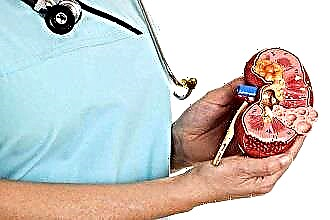Rheumatic heart disease is one of the main manifestations of a systemic connective tissue disease - rheumatism. In this case, all layers of the heart wall are affected (both separately and together) - the pericardium, myocardium, endocardium. Rheumatism can affect many other organs - joints, kidneys, bone tissue, but often rheumatic heart disease is its only manifestation. Most often, the disease develops in childhood, mainly in girls.
The reasons for the development of pathology
The immediate cause of rheumatism is an autoimmune process. It occurs due to the ingestion of various pathogens - bacteria or viruses. In most cases, it is group A beta-hemolytic streptococcus. The antigens of the human connective tissue are similar to the antigens of this bacterium. As a result, the antibodies of the immune cells begin to attack their body. All this is accompanied by an increase in the activity of the immune system. Usually, rheumatism develops after infectious diseases such as tonsillitis or scarlet fever, especially if their treatment was inadequate.
Hereditary predisposition also plays a significant role in the development of the disease. Most people are carriers of beta-hemolytic streptococcus, but only a small percentage of them develop rheumatism.
Pathogenesis and clinical picture of the disease
As a result of the interaction of autoantibodies with the connective tissue of the heart, the formation of the so-called rheumatic granulomas of Ashof-Talalaev occurs. They are small nodules made up of lymphoid cells. In the center, inflammation develops, and then necrosis. A scar forms at the site of the dead area. It is this process that causes pathological changes in the organ, as a result of which its function is disrupted.
The symptoms of rheumatic heart disease strongly depend on the location and severity. The main forms are primary (the so-called cardiac rheumatic attack) and recurrent rheumatic heart disease, which is characterized by a chronic course against the background of an already formed heart defect.
Common signs of a rheumatic heart attack are:
- rapid rise in temperature up to 39-40 ° С;
- inflammatory changes in the blood test (accelerated ESR, leukocytosis, shift of the leukocyte formula to the left, increased level of C-reactive protein);
- severe pain in joints (most often knee).
Acute attack gradually fades away over 1.5 - 2 months, and then goes into a chronic phase. Primary rheumatic heart disease usually ends with the formation of a valve defect.
Depending on the localization, such forms as pericarditis, myocarditis, endocarditis are distinguished. Each of them has its own specific picture. In cases where all three cardiac membranes are simultaneously affected, pancarditis develops.
Rheumatic pericarditis is dry and exudative (effusion). The latter option can lead to the development of cardiac tamponade. This form is manifested by the following symptoms:
- shortness of breath on exertion;
- swelling of the face and neck;
- tachycardia;
- arterial hypotension;
- dyspeptic manifestations (belching, nausea, epigastric pain).
Physical examination: heart sounds and rubbing murmur
Myocarditis can be focal and diffuse. The first option is sometimes asymptomatic, while the second affects significant areas of the heart muscle and therefore has a pronounced clinic:
- a feeling of interruptions in the work of the heart;
- dyspnea;
- dry cough, which eventually turns into attacks of cardiac asthma;
- pulmonary edema.
Percussion can be an increase in the boundaries of the heart, auscultatory - muffled tones and a rough systolic murmur, the accent of the second tone over the pulmonary artery. Wheezing can be found over the lungs, which is a sign of edema.
Isolated endocarditis usually proceeds latently, and manifests itself only when other forms are attached. However, it is he who becomes the basis for the development of valvular defects. The leaflet tissue thickens, calcifies, and thrombotic layers form on them. Auscultatory, this is manifested by systolic or diastolic murmurs in the projections of the valves.
Diagnostic measures
The basis for the diagnosis of rheumatic heart disease is the observation of the clinical picture. The doctor should carefully take an anamnesis, in particular, it should identify provoking factors, such as infectious diseases. Physical examination is essential. Detection of pathological heart murmurs may indicate the presence of valvular defects.
Standard laboratory and instrumental studies will help to suspect a disease:
- blood test (leukocytosis, shift of the formula to the left, increased ESR, the appearance of C-reactive protein);
- ECG (arrhythmias, myocardial hypertrophy, diffuse cardiomyopathy);
- X-ray of the OGK (allows you to detect an increase in the heart);
- echocardiography (the best method for detecting defects);
The following laboratory tests can confirm the rheumatic nature of heart damage:
- determination of anti-streptococcal antibodies;
- determination of the titer of autoantibodies;
- protein spectrum;
- diphenylamine test.
Patient treatment and rehabilitation
It is used mainly drug therapy and exercise therapy. With significantly pronounced defects, surgery may be necessary.
The following groups of drugs are used:
- glucocorticosteroids (prednisolone, dexamethasorn) - the main group that has anti-inflammatory and immunosuppressive activity;
- NSAIDs (aspirin, indomethacin, ibuprofen);
- antibiotics (penicillins, sulfonamides and others) - to combat infectious complications.
As symptomatic therapy, cardiotonic, antiarrhythmic, diuretic and other drugs are used.
For the purpose of further rehabilitation, sanitary-resort treatment, moderate sports, physiotherapy (hydrotherapy, balneotherapy) are indicated.
Conclusions
Rheumatic heart disease is a dangerous complication that often leads to the development of heart failure. It is characterized by a blurred clinical picture, which greatly complicates early diagnosis. This leads to the progression of the disease and in some cases requires surgery. Without timely treatment, the prognosis is poor.



